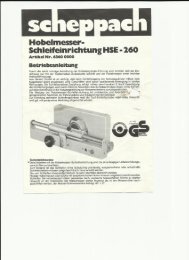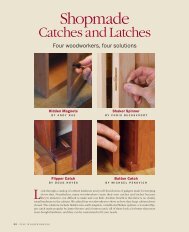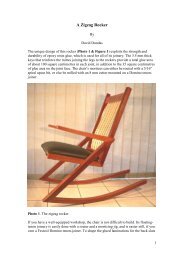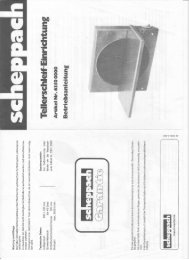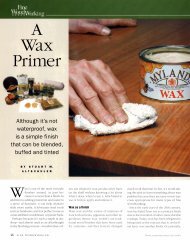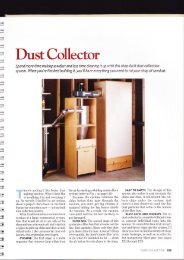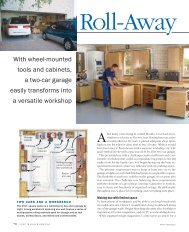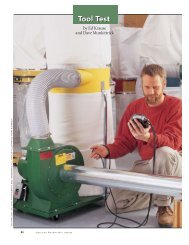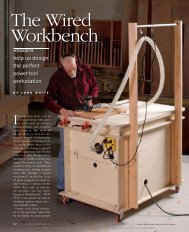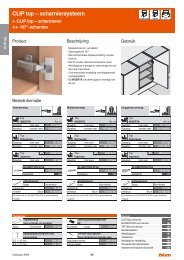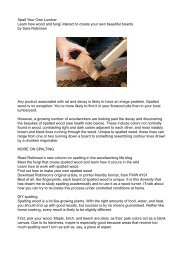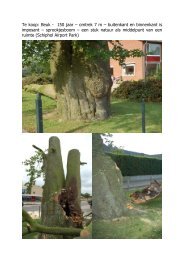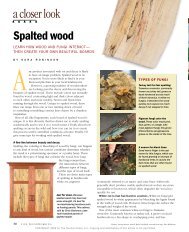Handplane Tune-up
Handplane Tune-up
Handplane Tune-up
Create successful ePaper yourself
Turn your PDF publications into a flip-book with our unique Google optimized e-Paper software.
SEPTEMBER/OCTOBER 2004outstanding improvement in their performance.The methods I’ll describe can beapplied to any Bailey-type plane with ametal body, whether old or new.Invest in a replacement bladeThe quickest way to improve a plane is topurchase a high-quality A2 steel replacementblade that has been cryogenicallytreated. These blades are available fromRon Hock and Thomas Lie-Nielsen (seeSources on p. 40), but if you buy from thelatter, be sure to order the 0.095-in.-thickblade because the thicker 0.130-in. blademay not fit in your plane. Even the 0.095-in.-thick blade will be significantly thicker andstiffer than a stock blade, greatly reducingvibration and chatter.Fit the frog to prevent distortionThe first step in the tune-<strong>up</strong> process is todisassemble the plane, remove the frog,and check its seating—the four contactpoints between the body and the undersideof the frog. A badly seated frog screweddown tight will distort the thin area of thesole just behind the throat of the plane.To determine how well the surfaces fit,work the relevant areas of the body castingwith a black felt-tip pen. Remove the foreand-aftadjustment plate, press the frog inplace, and slide it back and forth. The inkwill be scraped off where the surfacesmake good contact. If the frog rocks, onlytwo diagonal points are making contact.Work on the contact points until youachieve about 60% contact on all four surfaces.Although it is slow, I prefer to scraperather than file the contact points of the solecasting. With a file, it’s easy to remove toomuch material and ruin the tool. If you don’thave an engineer’s scraper, you can makeone by grinding a 6-in. file so that the lastinch of the two flat sides is slightly hollow,while the end has a convex profile.To perfect the fit, apply pinches of 180- or220-grit silicon carbide and a drop of waterto each scraped surface. Work the frog toand fro for a few minutes, leaving the surfacesmatte gray. Aim for 90% contact.The top of the frog comes next—Withmany new planes, you may find a pro-1 SCRAPE HIGH POINTSUse an engineer’s scraper toremove the high points andenlarge the areas of contactwhere the frog is seated to theplane body.23FIT THE FROGThe frog connects the blade tothe body of the plane. It isimportant that the frog seatssecurely to the body andprovides a flat mountingsurface for the blade. Aproperly fitted frog goes a longway toward reducing chatter.GRIND THE SURFACEApply a small amount ofsilicon-carbide powder to eachcontact point, add a drop ofwater, and then slide the frogback and forth to give themetal a smooth finish.SMOOTH THE TOPAfter marking the top of thefrog with a felt-tip pen, grind iton 240-grit wet-or-dry paperstuck to a smooth, flat surface.The center felt-tip lines shouldbe removed.Photos: Mark SchofieldSEPTEMBER/OCTOBER 2004 37



